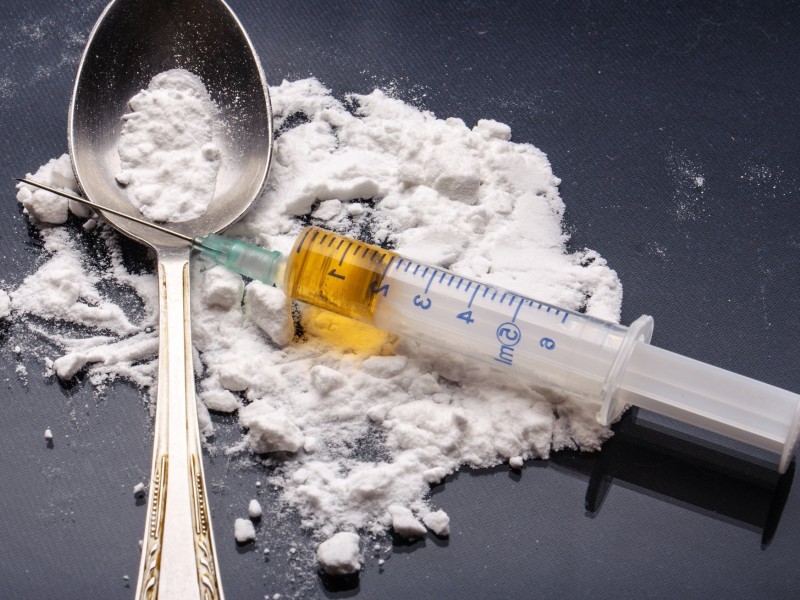
Jacksonville’s opioid crisis, as is the case around the country, is taking lives and resources from the budget all at once. Is a turning point imminent?
 Months back, Councilman Bill Gulliford began sounding the alarm about the increased casualty rate and the increased burden on emergency services from the crisis.
Months back, Councilman Bill Gulliford began sounding the alarm about the increased casualty rate and the increased burden on emergency services from the crisis.
Multiple meetings followed, then a bill was filed in June that would devote almost $1.5M to a pilot opioid program, to stem the tide of overdoses that is wreaking havoc with Jacksonville lives and emergency services budgets.
On Monday, Gulliford held a meeting with other stakeholders (including the Fire and Rescue Department), in which the particulars of the legislation (introduced on an emergency basis, with committee work this week) and the pilot program were discussed.
“I could think of a lot better things we could sit around and talk about spending $1.5M on,” Gulliford said.
However, the crisis is real. And current efforts are not abating it.
Overdoses, at last count, end four times as many lives as homicides in Duval County, with 2016’s count of 464 casualties more than doubling 2015’s count of 201.
Caucasians represent 86 percent of the deaths, and over half of those passing away are in their 30s and 40s
911 calls for ODs to the Jacksonville Fire and Rescue Department have tripled, with a call every two hours now. Narcan administrations: up 500 percent. JFRD responded to over 3,411 calls in 2016, and the cost of transporting OD victims could near $4.5M this year.
Gulliford noted that the money for this may not come out of fund balance, as the Lenny Curry administration may have another source of money for this.
Also, DCF has advanced a preliminary offer to fund all the Narcan for the pilot program — another potential cost defraying mechanism.
Gateway and River Region would be the in-patient facilities; UF Health was floated as an ER facility, though other hospitals may end up fulfilling that function
The proposal includes the following: residential treatment; outpatient services; medication costs, physician fees; access to medical and psychiatric treatment; and urine fentanyl test strips.
The Jacksonville Fire and Rescue Department would coordinate with the Florida Department of Health to identify participants; DOH would coordinate reproductive health services and linkage of care for women who are of childbearing age, including work with pregnant women to reduce the risk of Neonatal Abstinence Syndrome.
“We’re seeing more babies being delivered with addiction. That’s on the uptick,” said Gulliford. “What a horrible way to bring a child into the world.”
Breastfeeding from addicted mothers, meanwhile, presents its own challenge — as do the new fentanyl derivatives, which are increasingly potent and potentially fatal to users.
Monday’s meeting saw a lot of very specific performance data discussed, with deliverables and goals discussed to justify the investment.
“At the end of six months,” one JFRD officer asked, “how do we know it’s working?”
Factors such as reduction of recidivism, relapse, and other indicators would be metrics of success — key, given that one of the pervasive impacts is repeated emergency calls involving the same users, sometimes multiple times in a day.
There are some users who recover via Narcan, only to shoot up again almost immediately after discharge from the ER. And some users require multiple doses of Narcan for recovery.
Drug testing, early and often, would be a hallmark of the program — covering all substances of abuse and analogues thereof, including fentanyl and carfentanil.
“Your guys can’t keep taking the emotional pounding from these overdoses,” Gulliford said to JFRD, noting that one station alone had 17 overdose responses.
“How long do they withstand that kind of pressure,” Gulliford said, noting that some derivatives are so potent that physical contact with the substance can incapacitate the officers tasked with treatment.
If the program succeeds, other challenges will present themselves, such as recurring funding and scalability. Gulliford asserts that the public and private sectors would have to combine resources. That could also include helping recovered addicts get job placement.
“It’s not just going to be the city bellying up to the bar,” Gulliford said, citing the importance of a “campaign” to educate the public on the non-negotiable need for this program to address this “pervasive” problem.
But that problem is one that city policy makers would find preferable than rescue units hurtling from overdose to overdose, and bodies piling up in worst case scenarios.


